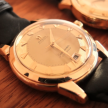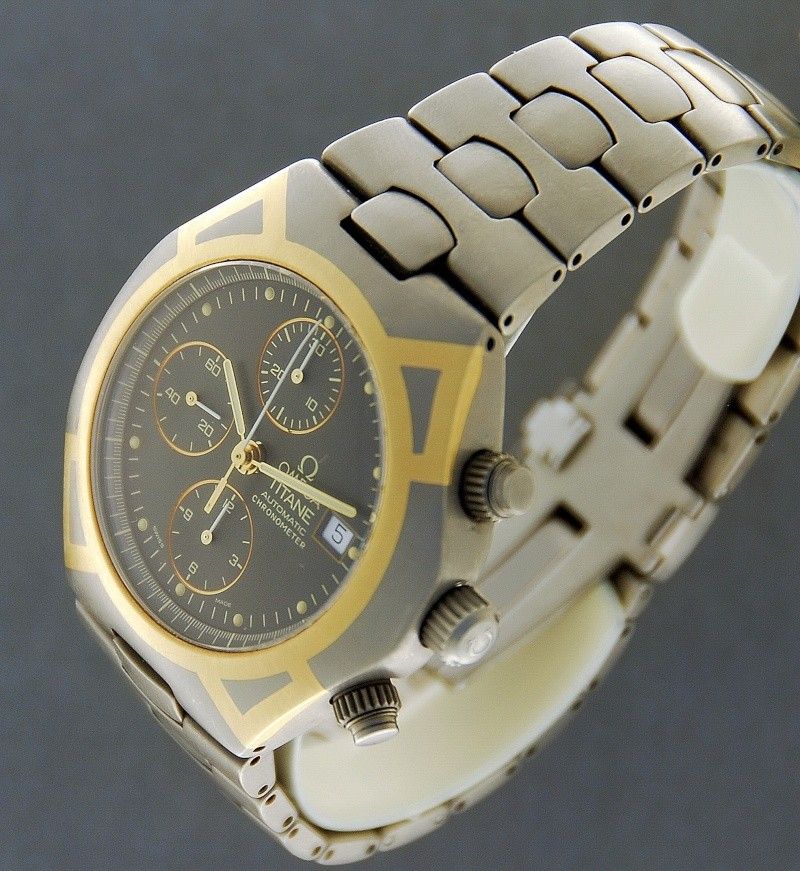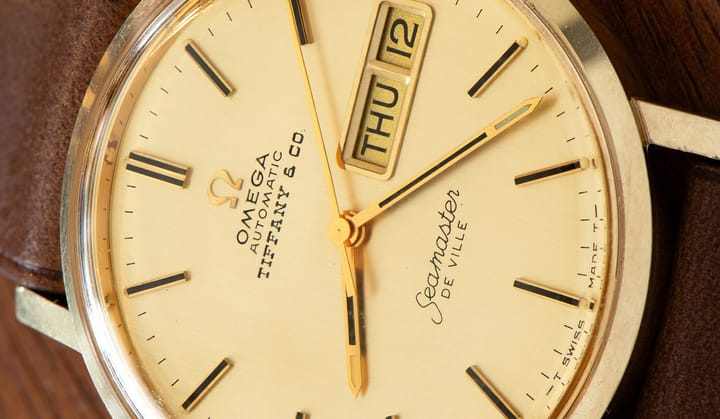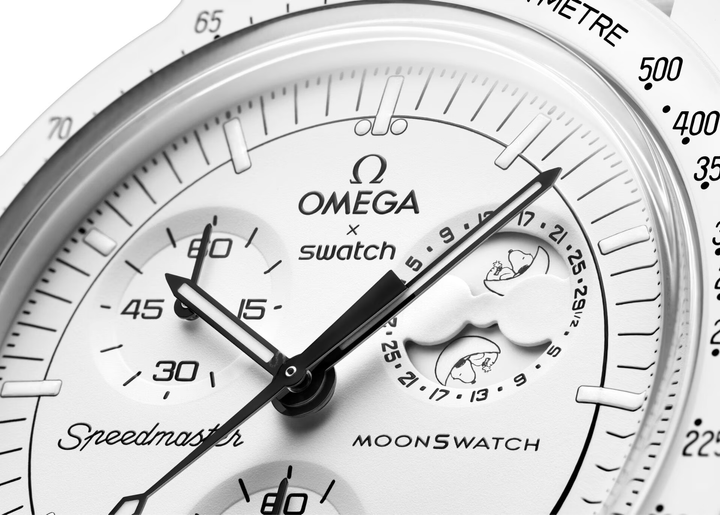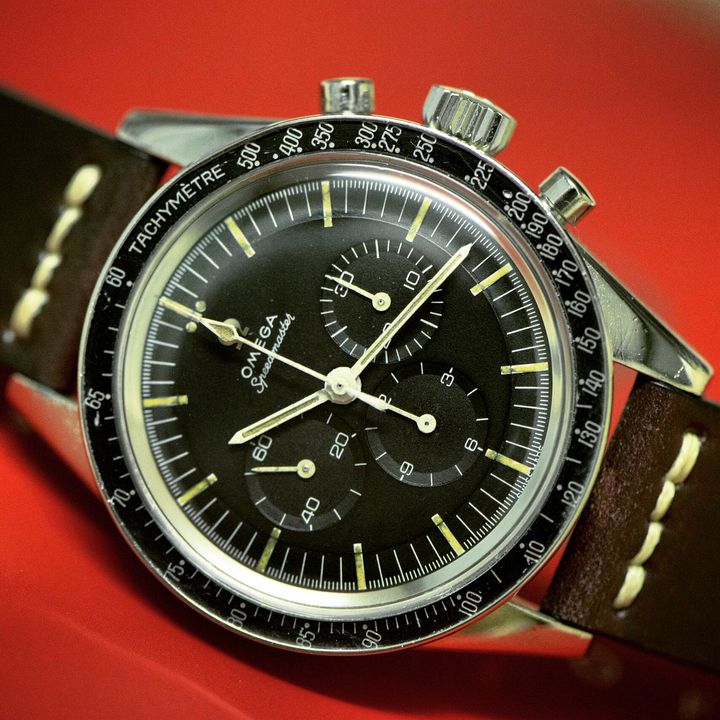The Apex of Polaris
Polaris was a brand new design language and direction for Omega and a very bold vision for the future of the company. To handle such an ambitious undertaking, Omega tapped the most highly qualified and lauded designer in the land, Gerald Genta.
Genta was the brilliant designer of watches responsible for the Audemars Piguet Royal Oak 5402, along with several models of Omega over the years and had only in 1976 been responsible for the Patek Philippe Nautilus 3700/1. Suffice to say he had more than earned the trust of the industry when it came to penning new sports watch designs.

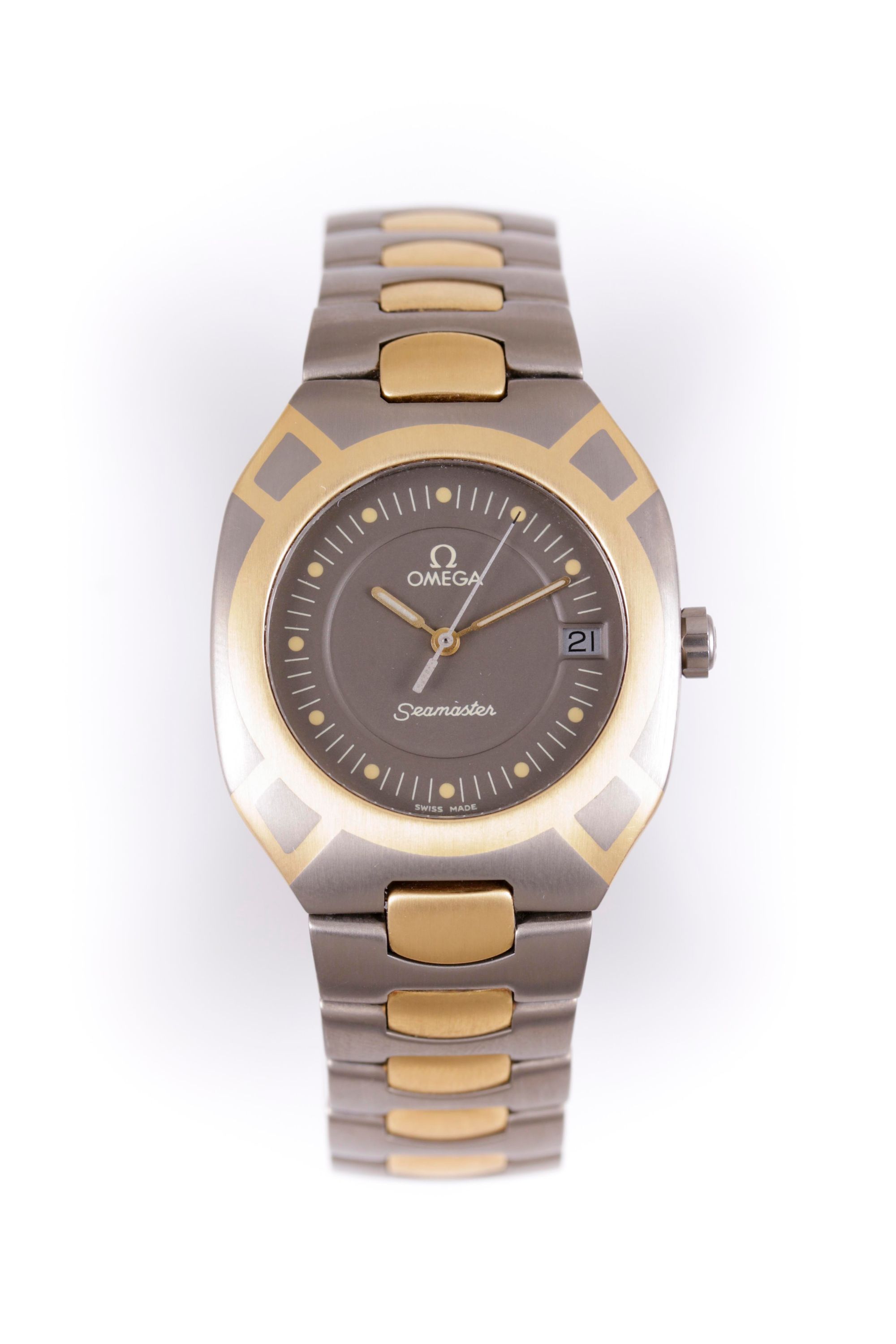
The original release in 1982 was a quartz three hand watch with date, with an unusual shaped integrated case and bracelet bearing a more than a few similarities to the Nautilus of 6 years earlier. The most striking feature was the two-tone titanium and gold bezel, with a 2mm thick layer of gold inlayed into the titanium in such a perfect transition as to be seamless.
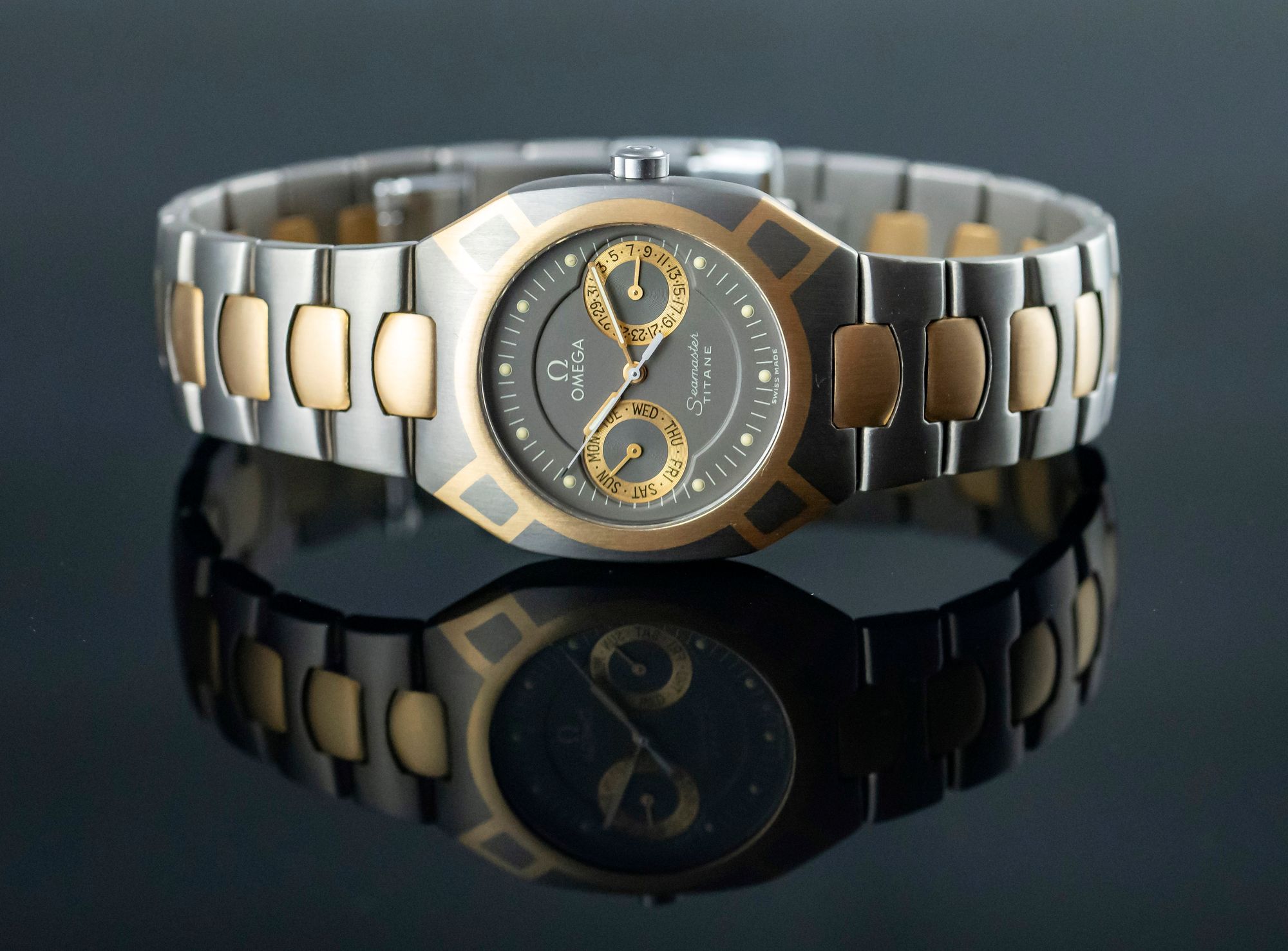
From this release in 1982, came a great number of models with different movements, features, complications and even metals. Indeed such was the variety of models in the range that it appeared to be a test bed of sorts for new ideas, technologies and movements. Almost all of these Polaris models were equipped still with quartz movements of some variety, whether 1/100 second chronograph, or multi-fuction LCD, or day-date. All except for the final two models introduced in 1988.
The Polaris Titane XL Chronograph was the first and only of its line to be fitted with an automatic chronograph movement. It required yet another size increase from the mid to late 30mm range up to 41.5mm, and increased thickness. It required a new, wider bracelet, with a more elegant and substantial butterfly clasp to balance the head. Lastly it was given a slightly higher level of finishing and quality than the others, with more detail found everywhere from the clasp to the dial to the pushers.
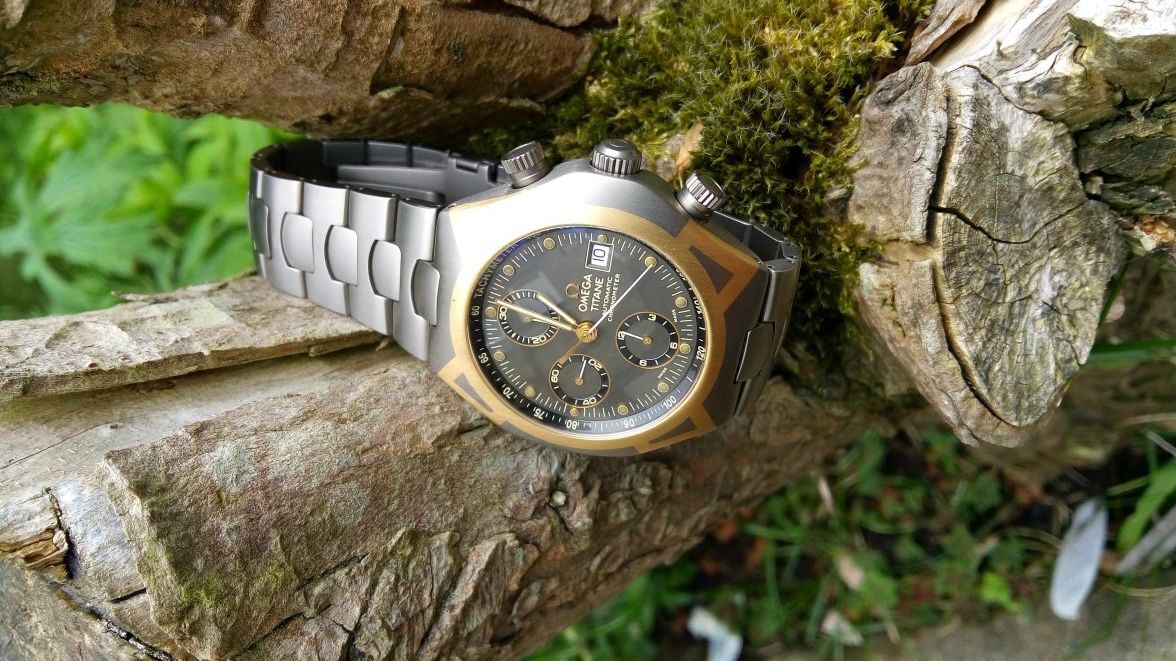
The two generations of this watch represent the end of Polaris, but in many ways, aesthetically, spiritually, and quality wise, a new beginning for Omega. A herald of what was soon to come.
Case bracelet & Movement
The case of the Polaris Titane XL Chronograph is easily its biggest statement. Being made from titanium with a small amount of gold and carrying an automatic movement it remains light although not as featherweight as early Polaris models. At 41.5mm it wears similarly to the Seamaster Pro 300M chronographs that succeeded it although somewhat thinner due to the lower depth rating of only 120M. The case-back on the Titane XL has a smooth surface with obvious way to remove it which led to me asking watchmaker @Archer how it actually worked. He was kind enough to inform me that this is a press-fit caseback with a single-use hard plastic seal which takes quite a bit of force to both install and remove. Given that, and the fact that the plastic seal needs replacement on every opening this really is best left to a watchmaker with access to genuine Omega parts.
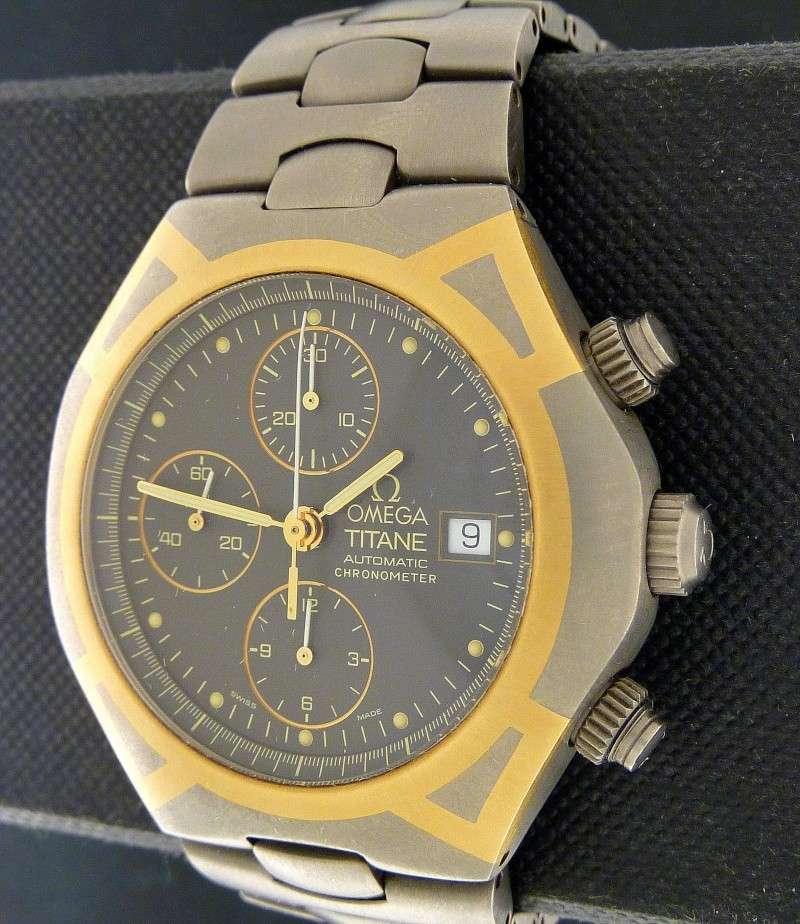
The pushers of the Polaris are quite different to Omegas before and after it, as they are screw down to immobilize the pushers and their seals for water use. Prior to this, chronograph pushers were not meant to be used while submerged but no physical method existed to prevent inadvertent pressing. Then from the Seamaster Pro 300M diver in 1993, Omega designed new pusher seal systems that allowed operation of the chronograph to the full depth of 300 meters.
The bracelet is of an alternating link design similar to the Patek Philippe Nautilus, and nearly identical to the Seamaster Pro 200M "Pre-Bond" which followed in the early 1990s. Unlike early Polaris models there is substantially more width and accompanying thickness in this reference with a very substantial taper from the endlinks to the clasp. Instead of the steel fold-over clasp found on many early Polaris models, Omega used an all titanium and gold design for the Titane XL. It features a locking clasp cover that swings over once both sides are folded in and presents an elegant gold Omega logo, hiding the clasp almost entirely from view.
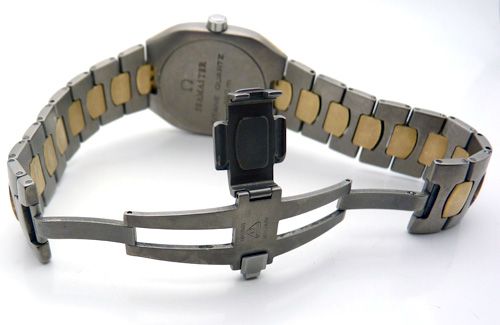
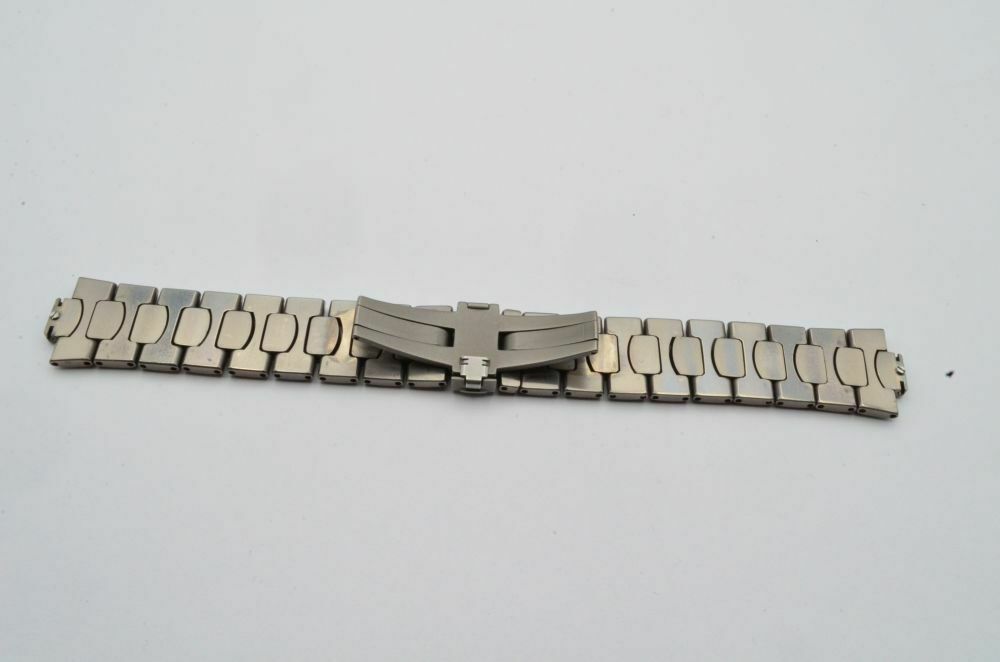
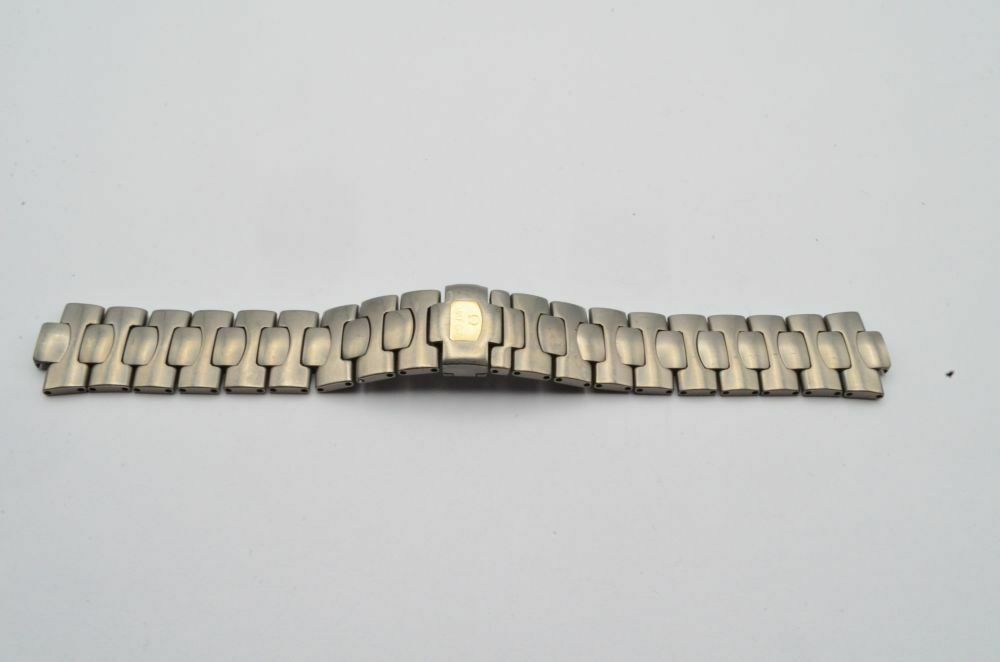
Sizing of the Polaris bracelet is similar to early Seamaster Pro 300M models, using a pin and bushing system but slightly different due to the unusual link shape. Due to the softness of the metals and ease of bending pins, it is best this is handled by a watchmaker. There is no micro-adjust in the clasp, and instead precise sizing is achieved though the use of half links, which are actually more like 1/3 of the size of a regular link. Links, half-links, and parts are still available through Omega.
The movement powering this watch is the Omega Calibre 1154 Chonometer Chronograph. It is highly accurate, durable, cheap to maintain, and being a high grade calibre built on the widely used ETA 7750, will never run out of parts. As with all 7750 powered Omega's there are some unique feelings that the movement creates on your wrist, especially in a light titanium case when the rotor is free spinning in reverse. It is quite an unusual thing the first time you feel it spinning like a top but it adds a bit more character to an already quite special watch.
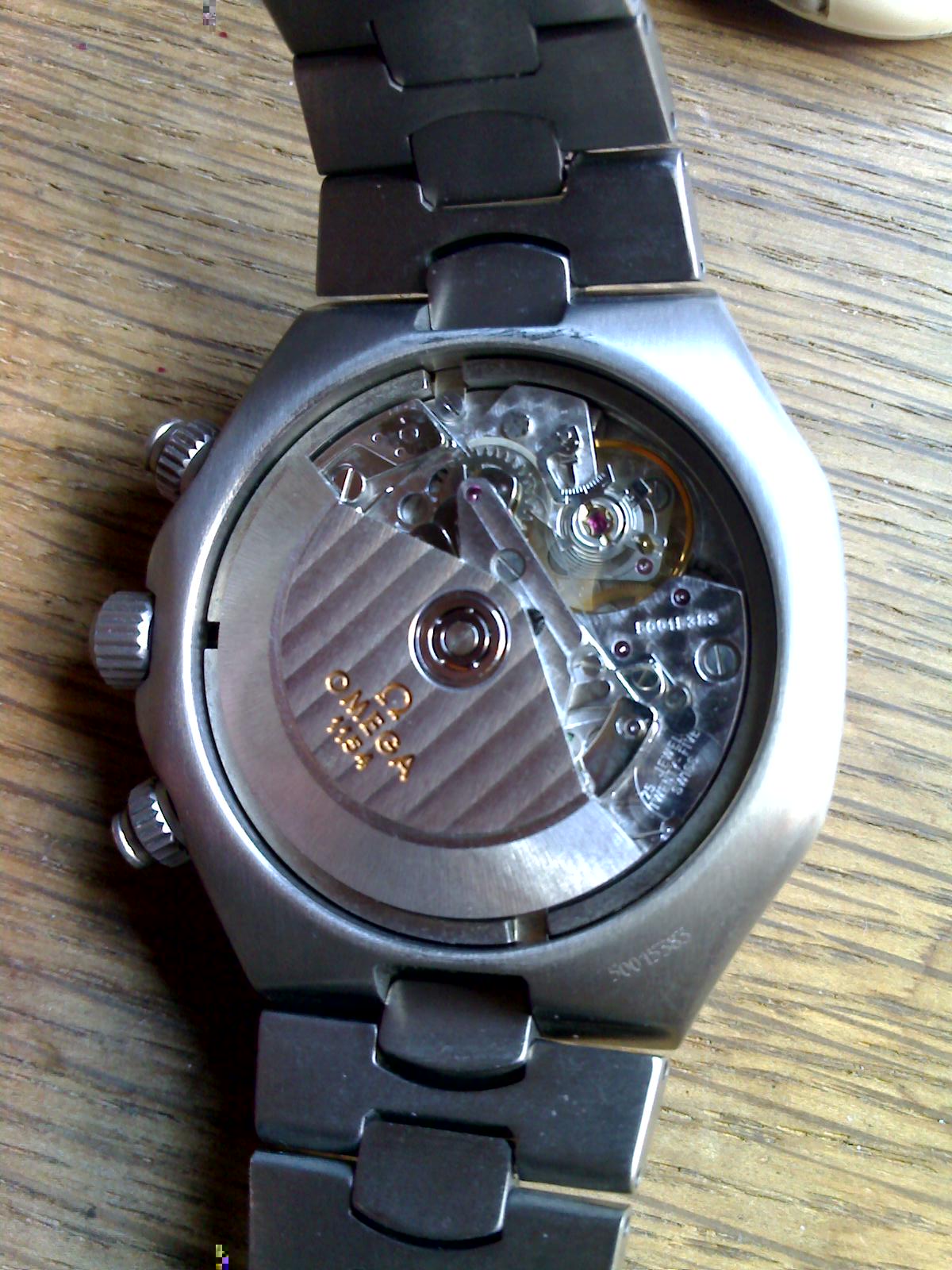
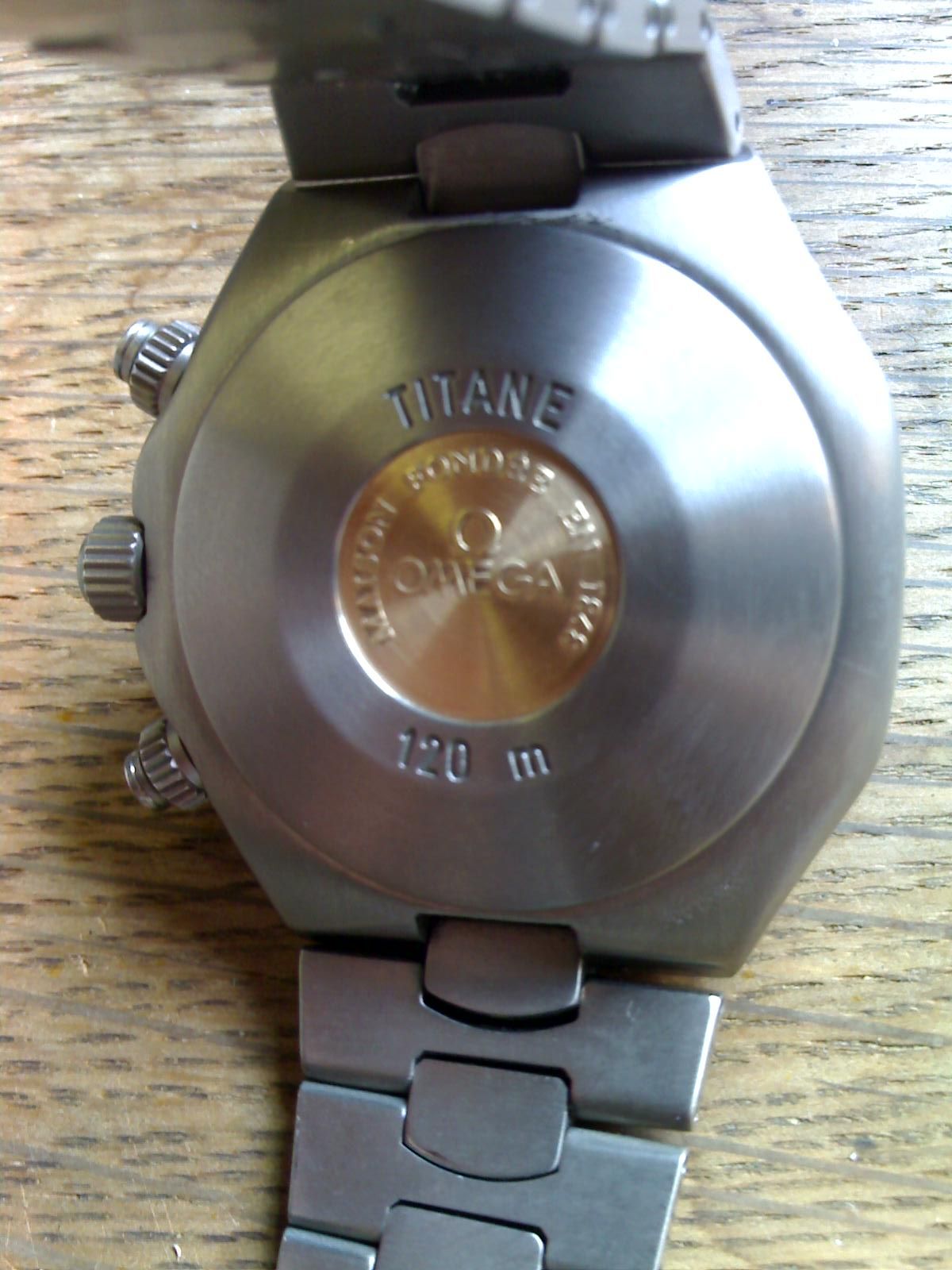
It is interesting to note that this use of a chronometer rated chronograph movement in a full production sports watch marked a first for the brand at the time of release. The use of chronometer grade movements in chronographs would go on to become standard on the Seamaster Pro 300M Chronograph range but the Titane XL was the first to carry one and have chronometer marked on the dial.
Model Variants
Reference 5890.40.00
The initial release version of the Titane XL was the reference 5890.40.00, carrying the case reference TB 378.0885 (TB referring to Titanium and Yellow Gold).
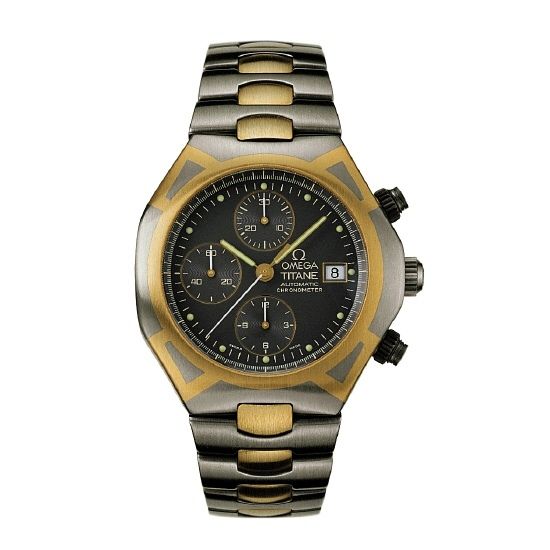
This variant carried an alternating gold and titanium bracelet, with gold used for the center links, and titanium used for the cross links and half links. Both gold and titanium surfaces should always be satin finished and not polished to a shine.
The dial is a dark grey tone, with the Omega logo and model information printed on the right hand side in white. There are subtle gold rings around the chronograph subdials and a traditional Speedmaster-like layout to the subdial markings. Around the dial is a dark grey, fixed, internal bezel with 1/5th second markings and second markers, angled in towards the dial.
Reference 5894.40.00
The second reference of the Titane XL was the 5894.40.00, carrying the case reference TR 378.0885 (TR referring to Titanium and Rose Gold).
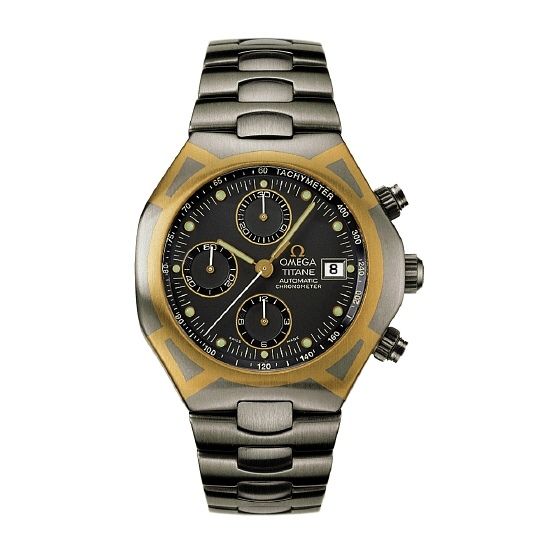
The first difference is the most subtle, with the gold bezel inlay being changed from yellow gold on the original, to rose gold on the updated reference. In photographs, due to how subtle the difference is between yellow gold and a light rose gold, and how hard it is to match white balances, it is all but impossible to tell the difference. Owners lucky enough to have a yellow gold and rose gold in their collection can tell side by side but short of that, it genuinely is very hard. This is not made easier by the fact that rose gold tends to lose its pink hue over time, and these watches are now quite old.
The second difference is much more readily apparent, the bracelet on the 5894.40.00 does not contain gold center links. There is still a gold Omega medallion on the butterfly clasp cover but aside from this the bracelet is entirely titanium.
The changes become much more significant when moving to the dial and bezel. The new dial features a black tachymeter bezel, similar to a Speedmater, in the same location as the previous 1/5th second version.
The new dial is lighter in tone overall, more of a mid-grey, with a clear contrast visible between it and the outer bezel. The subdials now have dark rings around them, matching the outer bezel, with radially displayed markings and a clean light grey center. The Omega logo is no longer painted on, but is rather applied in gold, a return to Omega's practice in the 60s. The hour markers too are applied in yellow gold with luminous material in the center. These elegant features would re-appear almost a decade later in the Seamaster Pro 2225.80 Chronograph, a higher finished refresh of the 1993 2599.80.
Transitional Variant
There is a third variant that appears quite frequently, and given that it has the non-gold bracelet, it should likely carry the same updated reference as the second variant, 5894.40.00.
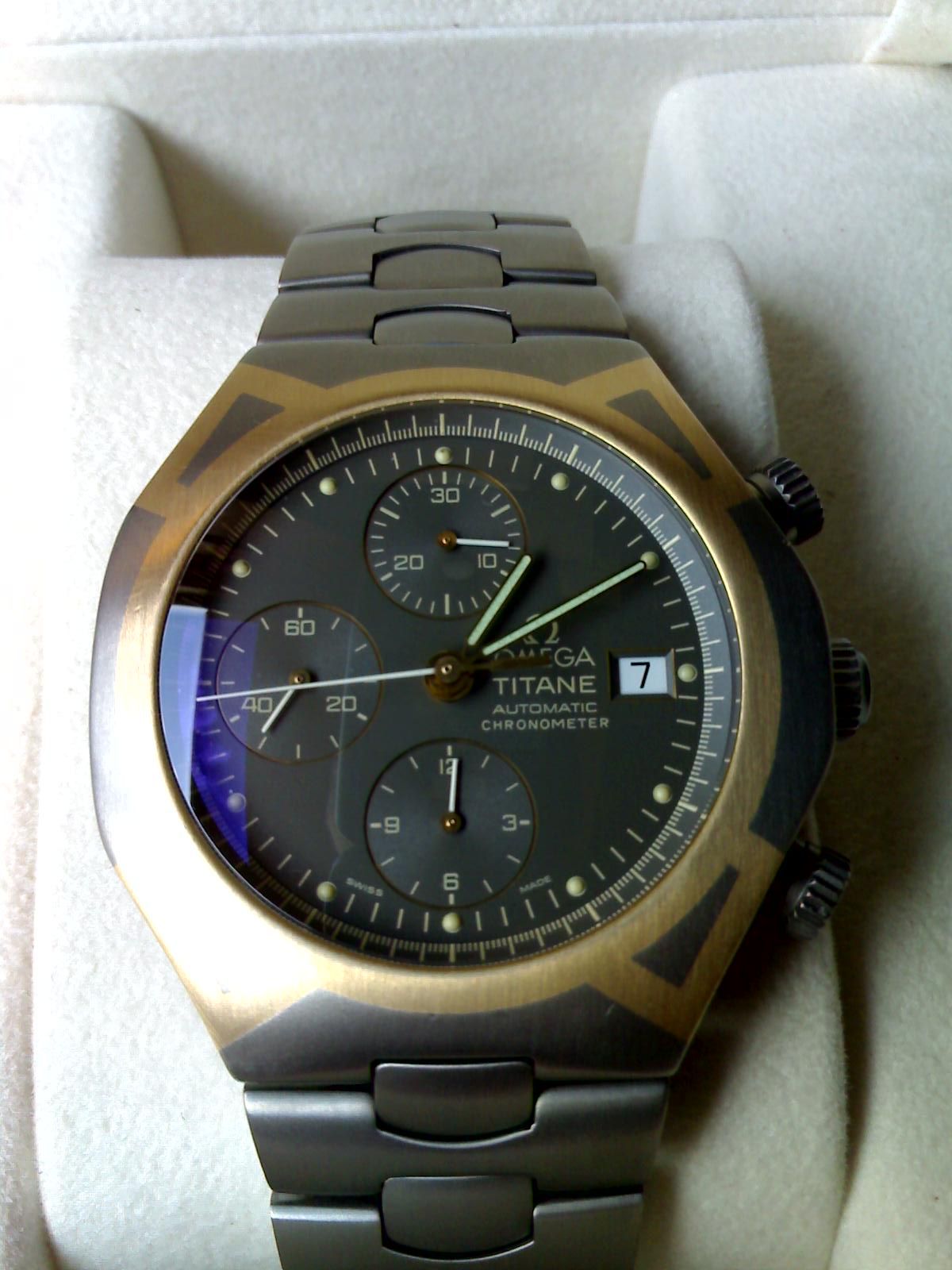
The simple difference between this transitional model and the one above, is that it carries the first generation 5890.40.00 dial and bezel, on the later case and bracelet. Many examples of this exist, including the one owned by Chuck Maddox and presented on his site chronomaddox.com, so one can only assume that Omega perhaps used up their supply of existing dials before moving to the applied logo version later on in the production run.
Historical Lineage
The Polaris often rather misunderstood or dismissed as a fringe model line in Omega's back catalog due to the unusual inlaid gold bezel and unusual shape. Its very important to consider the context behind its creation, what it represented to Omega, and the watches it eventually evolved into in order to really appreciate the model line.
In 1981, Omega was a dumpster fire. The quartz crisis, coupled with poor management, and nearly a decade of producing primarily sub-par watches had severely tarnished the brand, and crippled its parent company, SSIH, to the extent that the banks took control in 1981. In 1982, SSIH and ASUAG were merged to form ASUAG-SSIH, and in that same year, the first Polaris model, the TZ 396.0952 was released, with the characteristic gold and titanium case and bracelet, and a quartz movement.
While only quartz initially, the Polaris did represent a return to innovation, experimentation and investment in the future. Throughout the 1980s we saw Polaris models with 1/100 second quartz chronographs, analog / digital hybrid movements, paladium and diamond inlays, and day-date models. Towards the end of the 80s and early 90s, this culminated with the two Titane XL models.
That wasn't however the end of the line. The Polaris case, its bracelet, its design language, dial furniture and even caseback style would live on in the Omega Seamaster Professional 200M, the predecessor of the famous 2531.80 300M diver made famous by the James Bond Movies.
When seeing them side by side, its quite clear how the "Pre-bond" Seamaster Pro 200M fills the evolutionary gap between the Polaris generation and the Bond watch.
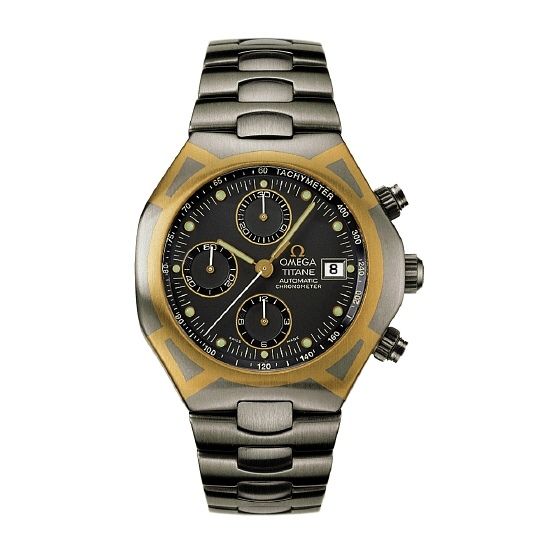
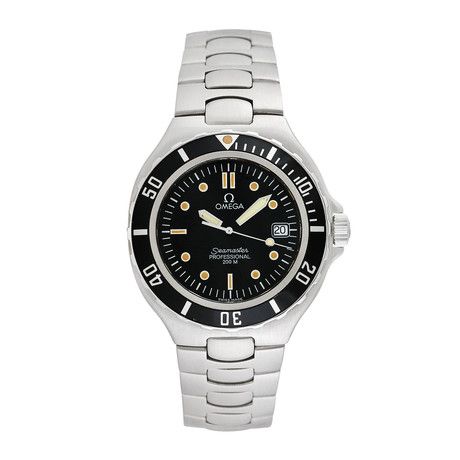
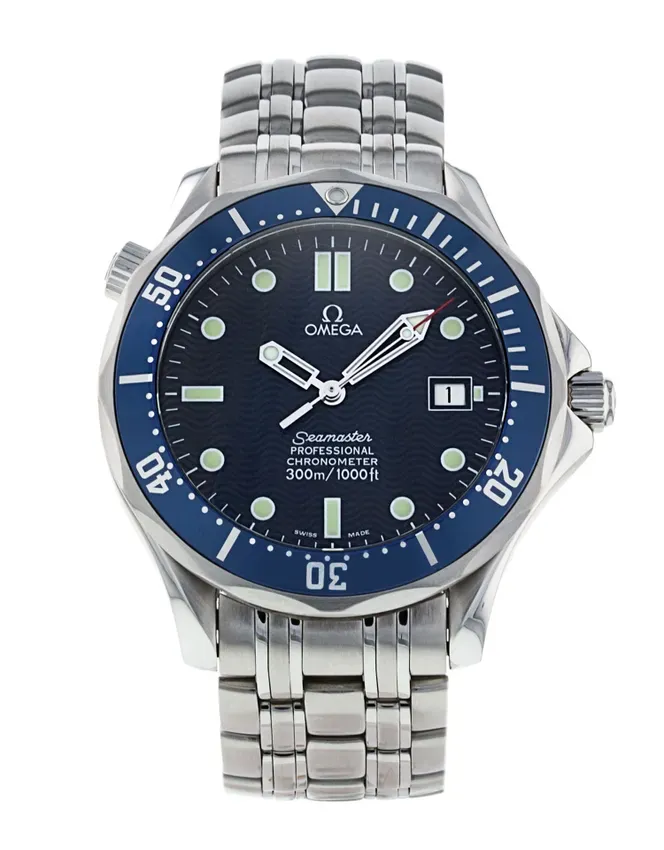
The unique combination of titanium and gold has also remained a part of Omega's catalog, through to the present day. The much beloved Ti-Tan-RAu 2296.80 came out in the early 90s, with 300M water resistance and a much evolved deisgn but retained many key features of the Polaris XL. This even included pushers that echoed the screw-down design of the Polaris, while not being necessary as the Seamaster Pro 300M Chrono Diver pushers were capable of use to a full 300 meters. This was again revived in the ceramic dial and sedna gold equipped Calibre 9900 Seamaster Pro 300M Chrono (Ref 210.60.44.51.03.001), extending the Polaris' legacy into a fourth decade. While many brands have tried to make titanium and gold work together, none have succeeded in the way Omega has in the years since 1982.
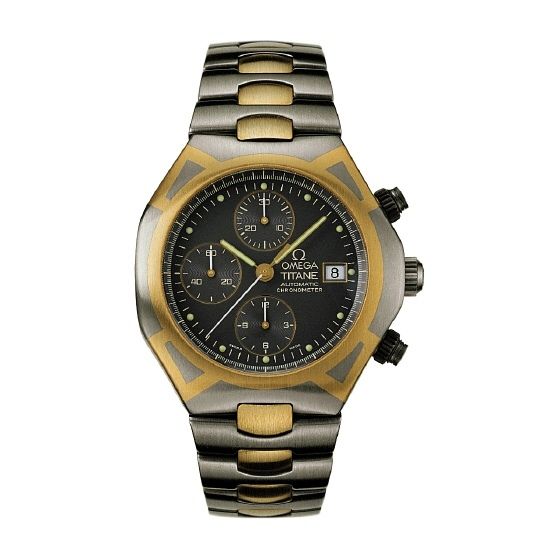
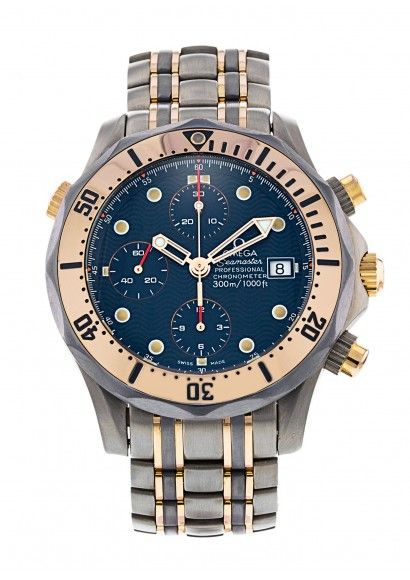
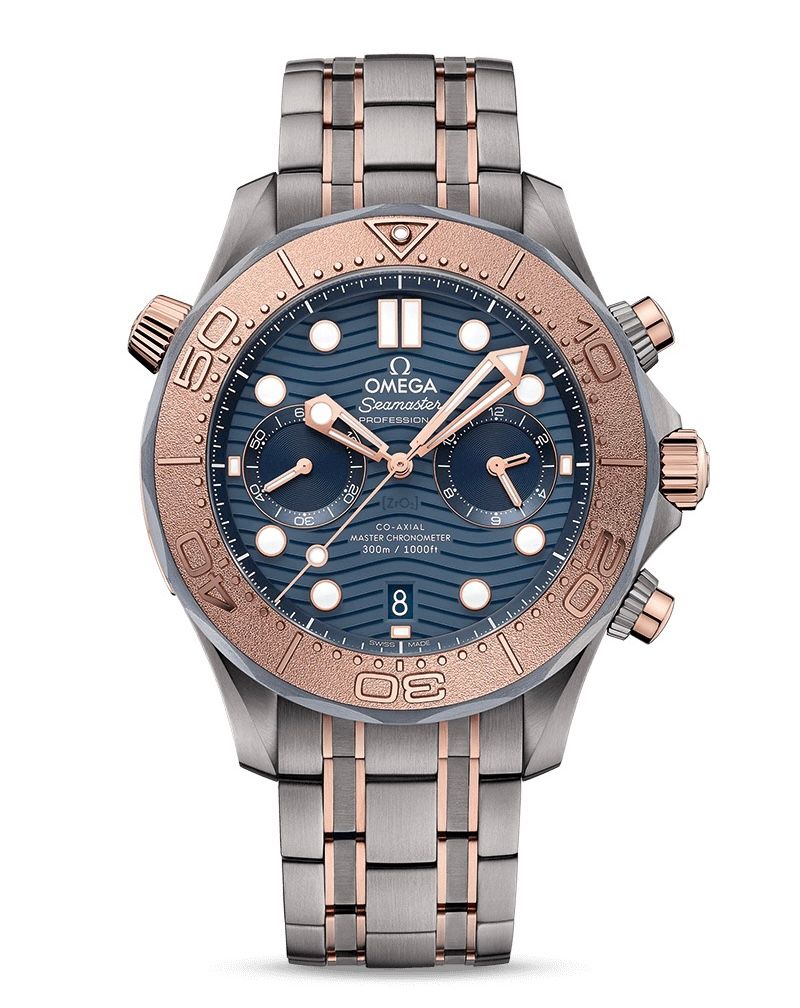
Buying
The most important aspect of these watches when shopping around is going to be the case and bracelet. Omega do still have ample supply of parts for these watches, but the parts are likely to be costly. Due to the soft and easily scratched nature of both gold and titanium, scratches and dings are par for the course. Unfortunately so is attempted re-finishing and polishing, which rarely ends well on these watches if done by anyone other than an absolute expert. All surfaces of the bracelet and case should have a satin finish and any shiny parts are simply wrong.
This bracelet design, while iconic and quite comfortable to wear, also has some significant drawbacks. The most significant is that design creates a lot of stress and leverage where the small center links meet the larger cross links. This can result in bent pins which are relatively cheap to replace but cal also lead to wear and stretching of the bracelet, so it's worth ensuring that it is in good condition.
Pricing is rather difficult and wildly variable. There are always several of these for sale by dealers on Chrono24 and elsewhere but at very high prices which they really never change hands for. They are however not cheap either, and on forums you can see listings anywhere from the low $1000 USD range for very rough examples up to $3000-4500 USD range for nice examples depending on condition and completeness. The lack of both supply and demand leads to both watches for sale and requests to buy languishing for a long time.
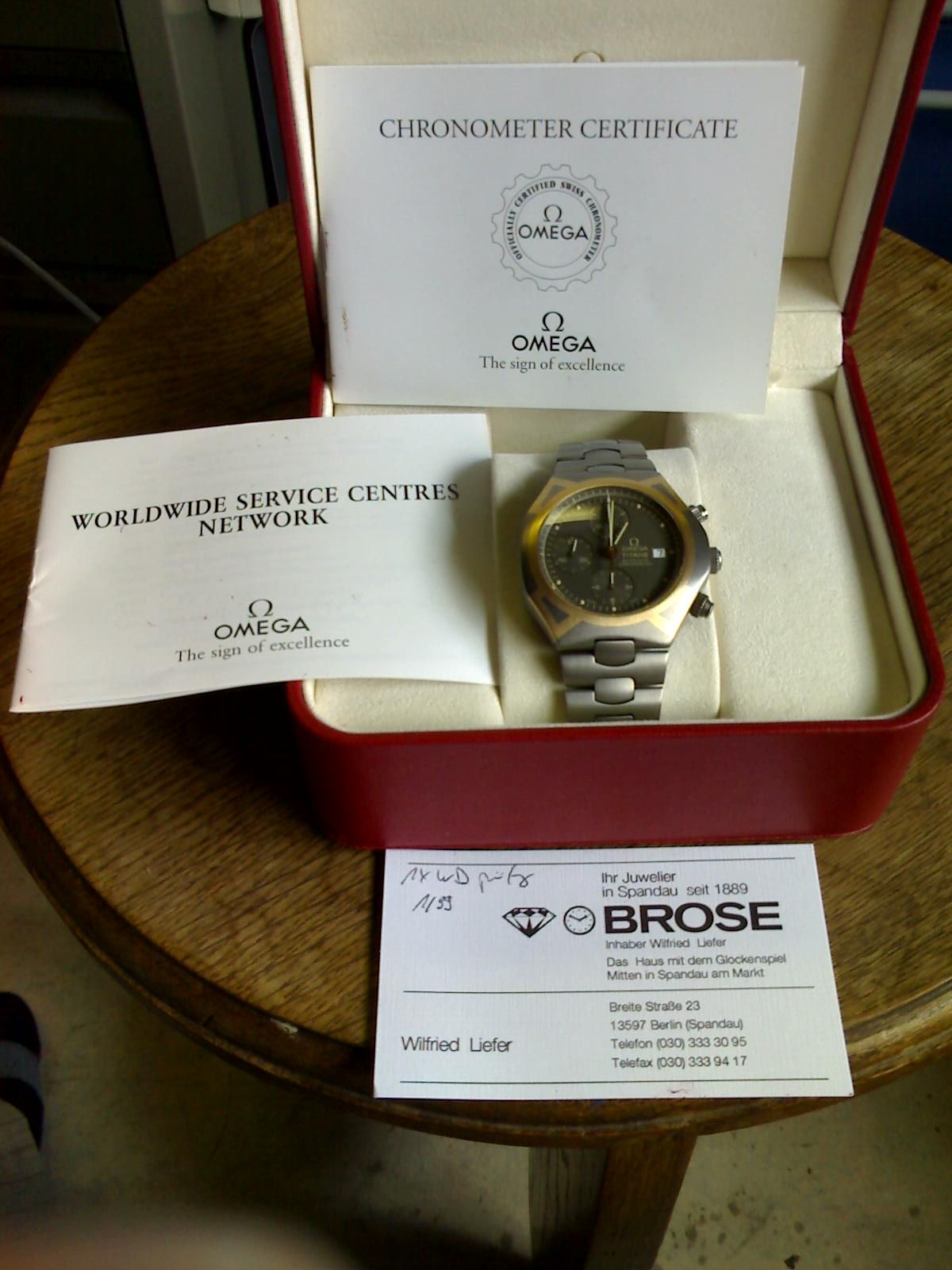
There does tend to be a lot more availability in Germany and on German watch forums and auction sites, with more reasonable prices also seen more frequently there. While the Polaris was not a German exclusive, having being marketed heavily worldwide, there definitely was a larger proportion especially of these mechanical versions that ended up in Germany.
It definitely is a watch very worth owning and one with a great deal of pedigree, quality, and desirability. It will though require a great deal of patience, restraint and effort to find the right example, in the right condition, at the right price.
Discussion thread on Omegaforums can be found here:
